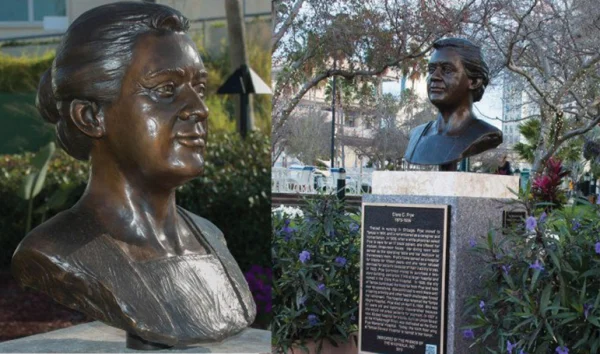
Hillsborough County's rich history of influential African Americans has made it a better place
During Black History Month in February, we consider a few of the many effective Black leaders who helped shape Hillsborough County.
- Queen Miller: For more than six decades, this tireless advocate for those in need has worked to provide social and health services, and to deter crime. The "Queen Miller Suite" was dedicated in her honor at the Lee Davis Center on North 22nd Street in East Tampa.

- Alfred Beal: Beal, a successful farmer, provided financial support that enabled freed slaves and their families to keep their properties and sustain a small community in far eastern Hillsborough County. He also donated land for a school, church, and cemetery. In 1923, the community was renamed Bealsville.
- The Bing family: Janie Wheeler Bing ran a rooming house in Plant City for African Americans during segregation. It opened in the late 1920s, closed in 1970, and now is on the National Register of Historic Places. Janie's son, E.L. Bing, Jr., helped write the proposal for federal grants to implement Hillsborough County's desegregation plan in the 1960s, and served as a Hillsborough County commissioner in the 1980s.
- George & Doretha Edgecomb: This power couple was influential in a variety of fields. George, who died of leukemia at age 33 in 1976, was Hillsborough County's first Black prosecutor and judge, and a community leader. His name adorns the George Edgecomb Courthouse, the George Edgecomb Bar Association, and the George Edgecomb Society at H. Lee Moffitt Cancer Center. Doretha, a lifelong educator, has served as a teacher, reading supervisor, drug prevention coordinator, principal, and three-term member of the Hillsborough County School Board.

C. Blythe Andrews, Jr.: As a community activist and chairman of the Florida Sentinel-Bulletin, Andrews exposed matters that lay "in the long shadow cast by Jim Crow," said Tampa's then-Mayor Pam Iorio, at the newsman's funeral in January 2010. The family-owned semiweekly newspaper has focused on Black residents and interests for more than 75 years.
Clara Frye: A nurse during segregation, Frye cared for ill African Americans and founded Clara Fry Negro Hospital. The hospital no longer exists, but a ninth-floor wing of Tampa General Hospital is named in her honor. A bust in her likeness is among those of prominent Hillsborough County residents along the Tampa Riverwalk.

Sylvia Rodriguez Kimball: The first Black woman elected to a major office in Hillsborough County (1990), she served two terms on the Board of County Commissioners, including a stint as chairwoman. Kimball was an inaugural inductee to the Hillsborough County Women's Hall of Fame.
Isadore "Billy" Reed: The cofounder of Belmont Heights Little League, Coach Reed for decades was a mentor to thousands of inner-city young people. As coach of Hillsborough High School's baseball team, he helped mold the careers of professional athletes including Dwight Gooden, Gary Sheffield, Carl Everett, and others.
Black History Month is a time to think about the legacy of civil rights. Many local leaders, including those above, displayed the drive, determination, and vision that helped create modern Hillsborough County.

